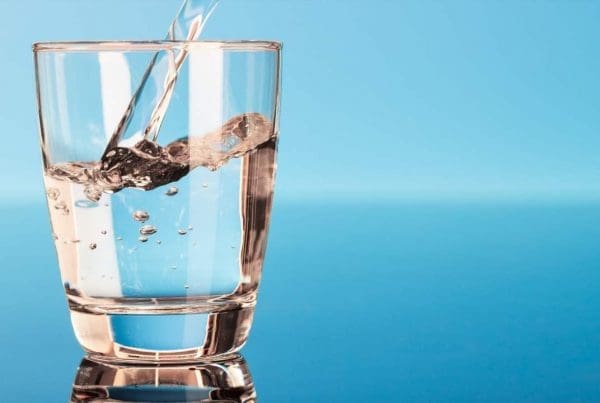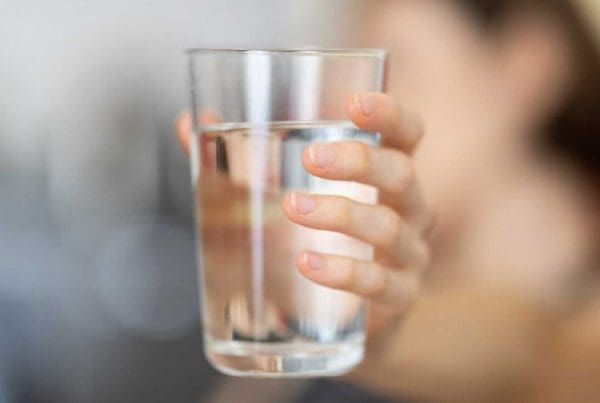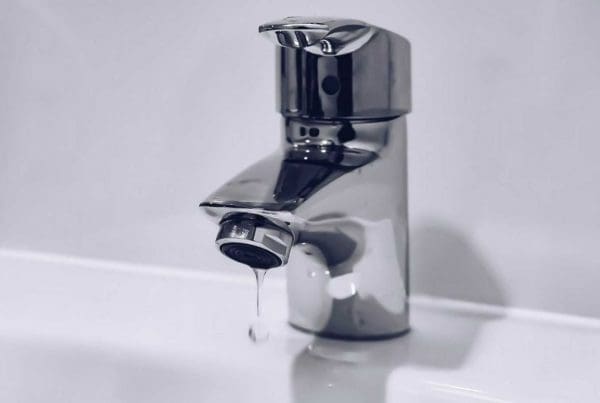Chlorine Water: Should I Have Chlorine Removed?
By far, the most commonly used drinking water disinfectant all around the world is chlorine. Roughly 98% of the water treatment systems in the United States use some form of chlorine. They do so in an effort to provide clean and safe drinking water to the population.
Chlorine is added to drinking water for some good reasons: it is known to help prevent contamination with germs. This chemical is able to kill disease-causing germs like norovirus, salmonella, and campylobacter. Therefore, it is seen as an effective way to decrease the risk of waterborne illnesses.
That being said, chlorine is an incredibly powerful chemical that most Americans are consuming every day. Is chlorine safe, really?
Let’s take a look at what you should know about chlorine water. This can help you make a decision about whether or not you want your family to ingest it on a regular basis.
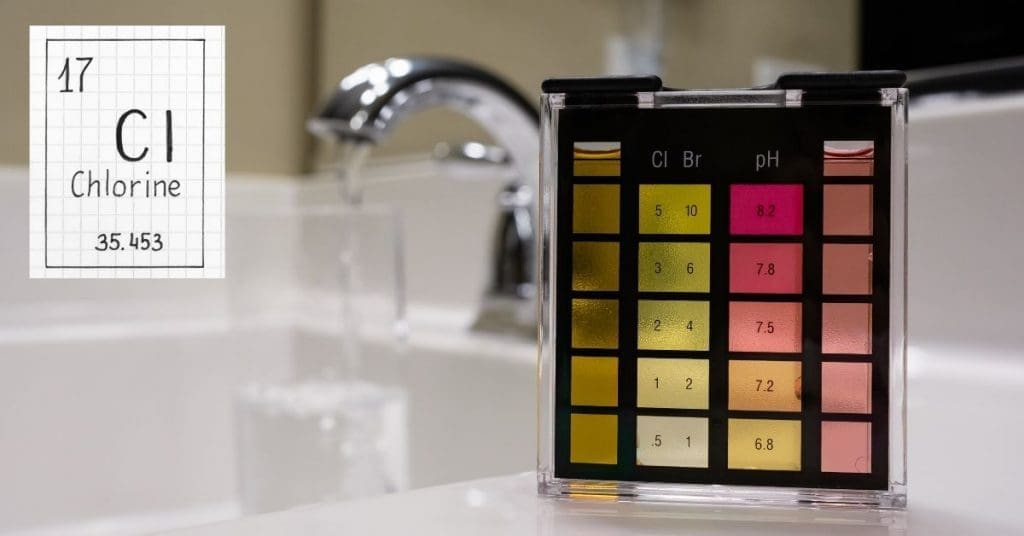 What Is Chlorine?
What Is Chlorine?
One of the most common uses of chlorine is to help keep the water in your swimming pool clean and clear. However, there are actually countless uses for chlorine industrially and otherwise. Chlorine is commonly used as a food preserver and as a pesticide. It is used in the manufacturing of everything from bulletproof vests to airplane seats. You can find chlorine in the construction, energy, healthcare, and technology sectors.
- This chemical element is number 17 on the periodic table.
- It is a naturally occurring yellow-green gas at room temperature.
- It has the third-highest electronegativity and the highest electron affinity of all of the elements.
- Chlorine a strong oxidizing agent and an extremely reactive element.
Discovered in Sweden in 1744, people started adding chlorine to the water to remove odors around 1835. Around 1890 it was discovered that chlorine was very effective for disinfection and could be used to reduce the amount of disease that was transmitted through water sources.
There are roughly 15,000 chlorine-containing compounds that are traded commercially.
Chlorine is used for a laundry list of reasons in the modern world. It has been used for sanitation, disinfection, and antisepsis for roughly 200 years. It was also used as a weapon during World War I by Germany.
Why Is Chlorine in City Water?
Chlorination was first continuously applied to the drinking water of Jersey City, New Jersey in 1908. Within ten years, the US Department of Treasury called for all of the drinking water in the country to be disinfected in this way. Now, more than one hundred years later, it is common for even small water supplies to use chlorine for disinfection.
When water is untreated in nature, such as from a lake, river, or groundwater, it is often teeming with microorganisms. Microorganisms are not necessarily bad or harmful to human health. However, some microorganisms, called pathogens, can cause diseases in people. These pathogens can be transmitted through a distribution system of drinking water. They can then lead to outbreaks of waterborne illnesses.
There are a number of different disinfection methods that might be used to kill off pathogens.
In addition to chlorination, water treatment facilities might use processes such as filtration, sedimentation, and coagulation. Chlorine is used in water sources because it is incredibly effective at killing viruses and bacteria. However, it doesn’t necessarily kill all microbes it comes in contact with. There are some protozoan cysts that are actually resistant to chlorine and can withstand its presence.
 Is It Bad to Have Chlorine in Water?
Is It Bad to Have Chlorine in Water?
When you research the topic online, you will find a wide range of opinions on the matter. While some people might claim that chlorinated water is perfectly safe and protects us from a number of undesirable diseases, research is increasingly touching on the reality that there are some serious concerns when it comes to the link between chlorinated water and a number of long-term health conditions.
Is Chlorine Safe or Is Chlorine Unhealthy?
When you think about it, it’s a little scary to be regularly consuming something that was used as a weapon during World War I.
As time has gone on, people have become increasingly skeptical of regularly ingesting chlorine. In fact, according to the Environmental Protection Agency, Americans consume somewhere between 300 to 600 times the safe level of chlorine every single day.
Chlorine and drinking water can be dangerous for a number of reasons. Let’s take a look at some info you’ll want to consider when deciding whether you want chlorine in tap water.
The Presence of Toxic Carcinogens
For one, chlorine can mix with organic compounds and produce harmful byproducts. These byproducts are known as trihalomethanes (THMs). It is believed that these byproducts can trigger cell damage by producing free radicals in the body.
The CDC claims that 4 milligrams of chlorine per liter is a safe level of chlorine in drinking water and can help to kill bacteria and germs that can lead to waterborne diseases.
One new study done by John Hopkins identified new carcinogenic and toxic byproducts that are created when regular drinking water and chlorine are mixed together. Some byproducts are already treated in most local water treatment facilities. It’s important to understand, though, that most of these byproducts aren’t regulated at the federal or local level. This study also found that there were additional compounds in chlorinated drinking water that could have a detrimental impact on long-term health.
Until this research was performed, it was unknown that the known carcinogen and toxic compound called BDA is also present in drinking water. The molecules of BDA are so lightweight and small that they are difficult to differentiate from the other molecules that make up water.
In some European countries, they have cut back or even eliminated adding chlorine to their water supply because of the known earlier disinfection byproducts.
The Impact of Chlorine on Your Gut Bacteria
Another problem with ingesting chlorine has to do with the same reason that it is seen as so beneficial: its ability to kill off bacteria.
It’s a good thing that we aren’t consuming pathogenic bacteria through our water sources. However, introducing chlorine into the human body means that it can also wreak havoc on our gut bacteria.
 It is increasingly understood that having flourishing and healthy gut bacteria is essential to our health. Researchers have found that there is a link between a lack of beneficial microbes in our gut and the presence of a wide range of diseases. These include:
It is increasingly understood that having flourishing and healthy gut bacteria is essential to our health. Researchers have found that there is a link between a lack of beneficial microbes in our gut and the presence of a wide range of diseases. These include:
- Irritable bowel syndrome
- Colorectal cancer
- Type 2 diabetes
- Obesity
- Certain autoimmune diseases
- Autism
Poor gut health can also lead to uncomfortable conditions such as diarrhea, gas, bloating, abdominal pain, and constipation.
What Studies Have Been Done to Show the Harm Chlorine Has Caused?
A number of studies have been done that reflect the potential long-term health effects that chlorinated water can cause.
One study took a look at thousands of cancer deaths that occurred in the United States. They found that the risk of gastrointestinal cancer was increased by 50-100% by drinking chlorinated water.
Another study analyzed the impact of having chlorinated water in Taiwan. It looked at the cases of almost 400,000 infants in the country. They found that pregnant women who drank chlorinated water had an increased chance of giving birth to children that had:
- Major brain defects
- Heart problems
- Cleft palate
Another case takes place in Roseto, Pennsylvania. Here the population switched from drinking mountain spring water to tap water that had chlorine in it. Before the switch, the population experienced practically no heart attacks. There is even a term named after the town called “the Roseto Effect.” This describes the phenomenon of a close-knit community having a reduced rate of heart disease.
When the community switched to drinking chlorinated water, however, heart attacks became more prevalent in the population. This occurred even though they hadn’t otherwise changed their diet.
Another survey was published in the journal Annals of Allergy, Asthma, and Immunology. It found that the byproducts of water chlorination known as chlorophenols might be an explanation for why there has been an increase in the prevalence of food allergies in the western world.
Chlorine Water: Protect the Health of Your Family By Filtering Out Chlorine
As you can see, recent research and studies suggest that there is reason to be concerned about regularly ingesting chlorine water. If you have a municipal water system that is treated with chlorine, you might be wondering whether or not there is anything you can do about it.
On top of the potential health concerns, chlorine can also make your water smell and taste unpleasant, damage your plumbing, and dry out your skin.
Luckily, there is. Purchasing a dechlorinator can be a great solution for your whole house so that you don’t suffer the negative effects of chlorine water.
Are you thinking about getting a dechlorinator for your home? If so, you can get a free quote from C and J Water!


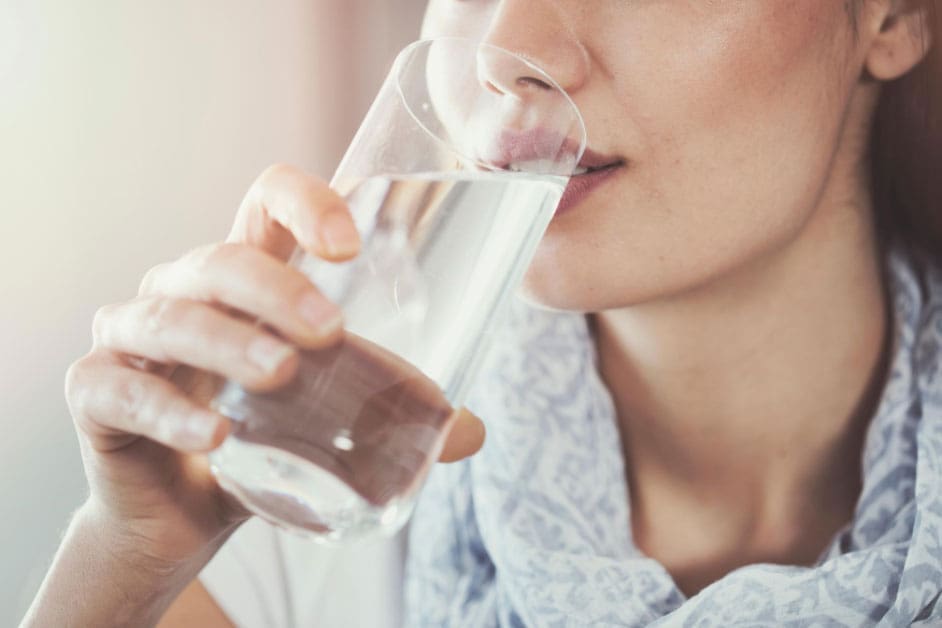 Is It Bad to Have Chlorine in Water?
Is It Bad to Have Chlorine in Water?